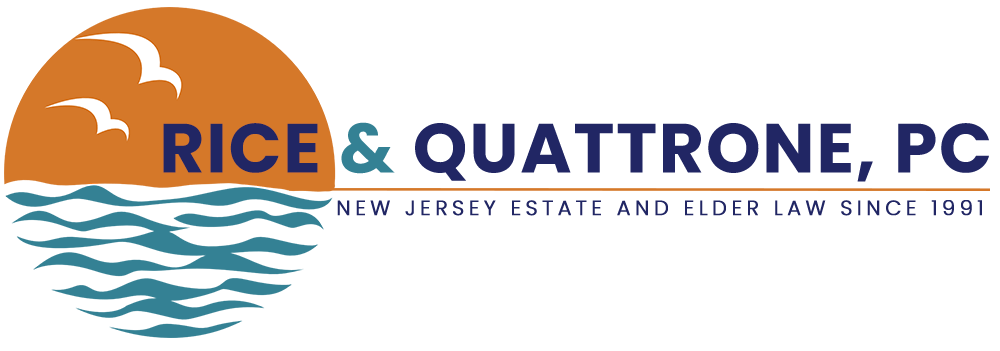Continuing Care Retirement Communities (“CCRC’s”) in New Jersey
By: Nancy M. Rice, Esq., CELA
I became aware of Continuing Care Retirement Communities (“CCRC’s”) in the 1970’s because my grandmother had volunteered in one and often said she would go there “when she was ready.” At that time, it was expected that the Senior would sell her house (most had not much else), give the proceeds to the local CCRC, pay a fixed monthly amount to the facility, and rest assured that she would be cared for the rest of her life by skilled nursing care if necessary.
Because a strong majority of CCRC’s are owned and operated by religious institutions, members felt comfortable turning over significant assets in return for a promise of care, perhaps considering that they were making a charitable contribution of any excess funds.
Today, Entrance Fees can well exceed the equity in a principal residence (at least in South Jersey!) and Seniors are required in many cases to “pay as you go” for increasing levels of care. Yet CCRC’s remain a viable, and in some cases, optimal choice for many. The opportunity to “age-in-place” is especially attractive to married Seniors and to the families of widowed or single Seniors.
Because CCRC’s offer several housing options, individuals can select the lifestyle that fits with their personal needs. CCRC’s also offer a range of services, amenities, and health and wellness programs geared toward helping residents stay healthy and independent for as long as possible. Perhaps the primary advantage that CCRC’s offer is providing residents with access to independent, assisted living, and nursing care which allows them to “age in place.” Residents and their families know that if their needs change, the appropriate level of support is available from independent living, to assisted living and nursing care.
An ever-increasing number of seniors are choosing to spend their retirement years in CCRC’s. Nationwide, more than 625,000 retirees make their homes in continuing care retirement communities.
All CCRC’s offer three basic levels of care, though individual communities may use a different term for each level. The three care levels are as follows: (1) Independent Living, (2) Assisted Living, and (3) Skilled Nursing Care. Independent Living apartments or cottages are suited to individuals who need little or no assistance, while Assisted Living apartments are designed for those who require some help with the Activities of Daily Living (e.g., eating, bathing, medication management). Skilled Nursing Care is offered in an on-site facility often called the Health Care Center, which offers 24-hour nursing care. Normally, all residents have access to services in the Health Care Center such as routine health screenings, as well as more specialized services such as speech, physical, or occupational therapy. Residents can also stay in the Health Care Center while recovering from short-term illness or injury, then return to their apartment or cottage after they recover. The Health Care Center is also available for residents needing long-term care.
CCRC contracts are often titled “Residence and Care Agreements” and vary widely among facilities, and often change. Within the continuing care industry, there are three types of CCRC contracts: Extensive, Modified, and Fee-for-Service.
These three contracts differ according to the type of housing, services, amenities, and care the CCRC provides to residents. The contract details the accommodations, services, and care the facility is obligated to provide, and serves as a protection to residents in that it clearly specifies all terms and conditions of the agreements.
The contract specifically sets forth the financial obligations that new residents are assuming (i.e., the amount of the Entrance Fee and the amount of the Monthly Accommodation Fee). The contract may also include a cancellation clause that specifies the portion of the Entrance Fee that will be refunded if a resident leaves the community.
The modified contract generally offers a lower up-front Entrance Fee, and some offer nursing care at lower rates than in fee-for-service contracts.
Interestingly, a resident who chooses a three-bedroom cottage will pay both a higher Entrance Fee and a higher Monthly Fee than a resident who chooses a one-bedroom apartment. A resident needing assisted living services may have a higher Monthly Fee than a resident who requires no assistance. If an individual moves into the CCRC as an independent living resident, then moves to another level of care, the Monthly Fee is adjusted accordingly, but no additional Entrance Fee is paid.
New Jersey Law
CCRC’s are regulated by the Department of Community Affairs. CCRC’s must be certified, and even their advertising and required contractual provisions are spelled out in N.J.A.C. 5:19.
Conclusion
Seniors should be aware that CCRC’s can offer a wonderful opportunity to “age in place.” It is important to understand the financial and legal aspects of the transaction, however. In each case, an experienced Elder Law attorney should carefully review the Residency Agreement, as these are changed periodically by the facilities and because each client chooses different payment alternatives (Traditional, Modified, or Fee-for-Service) and require different levels of care upon admission (Independent, Assisted Living, or Skilled Nursing).
